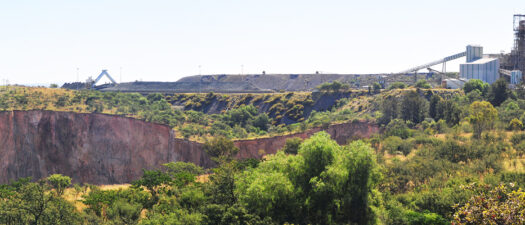What needs is the mining industry facing today? According to Reuters, the world’s top mining companies have been recently warned that assets will be stranded and investors will walk away.
The Answer to the No. 1 Problem of the Chile Mining Industry: Water Use in Mining

Water is a crucial resource in the mining process. With mines often located in remote and dry areas, a sustainable supply of water is vital. However, despite improved efficiencies, mining companies are facing challenges in procuring water sources. The challenges intensify when mining companies use the ground and surface water that local communities rely on for their domestic use. This often results in protests, public scrutiny, and stricter environmental regulations.
In June 2021, the mining group BHP agreed to pay compensation for environmental damage caused by overdrawing water from the Punta Negra salt flat for its Escondida mine.
The Escondida mine now draws 100% of its water from the sea and treats this in a desalination plant.
 Mining companies have been facing challenges in procuring water sources
Mining companies have been facing challenges in procuring water sources
From Water Dependency to Water Resiliency
BHP is not alone. Water for use in mining is a growing problem. It has become clear to mining companies that groundwater resources are limited and essential to communities and the environment, and industry cannot rely on these crucial natural resources in the long term.
As the water demand increases across all sectors suffering from water scarcity and ongoing droughts, desalination is seen as the best option for overcoming these challenges. The Chilean government followed through and proposed new policies to promote the use of desalinated water in the urban, mining, and agriculture sectors of the country.
The use of seawater desalination by mining in Chile is expected to grow by 156% through 2030 to 11 cubic meters per second, while the use of continental waters will decrease by 6%.
From Industrial to Domestic Use – A Win-Win for All.
Chile is experiencing an increase in water demand for mining operations as well as domestic use. Investment in desalination plants could help satisfy this growing need at both ends. The challenge to supply an increasing population with potable water as traditional water sources become even more stressed has resulted in calls to require that mining companies contribute up to 25% of their desalinated water for domestic usage. One of the 200 desalination projects we are now working on at IDE follows this logic. The company has committed to desalinating water for its own industrial needs and, free of charge, for the community. Win-win for everybody involved.
Water desalination can allow mining companies to reduce their reliance on groundwater, and be part of the solution rather than the problem. However, water intake is not the only water-related issue that mining companies should be addressing.
 Water desalination can enable mining companies to reduce their reliance on groundwater
Water desalination can enable mining companies to reduce their reliance on groundwater
Managing your industrial wastewater; recover, reuse, discharge.
Mining companies need to manage the wastewater generated by their ongoing operation efficiently. Over recent years, societal and environmental pressures have led to a growing movement and new regulations pressurizing the industry to reduce its volume of wastewater and treat it before discharge to prevent environmental pollution.
There are many issues at stake here: discharge requirements, problematic contaminants, off-site disposal costs, and reuse targets. Mining companies should seek wastewater solutions that will allow them to minimize brine volumes, effectively treat sulfate-rich mining water and acid mine drainage, and maximize freshwater recovery. And whether they choose to reuse this wastewater for their processes or release it back into the environment – proper treatment is essential.
We can take care of your wastewater hassles and help you meet your regulatory needs and environmental targets, as well as reuse potential, leaving you free to focus on what you do best – operating and growing your mining business.

















